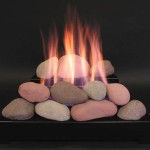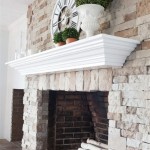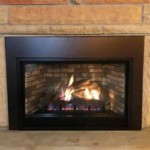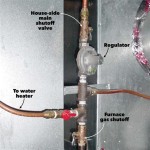Fireplace Old Town: A Timeless Addition to the Historic Landscape
The term "Fireplace Old Town" evokes a sense of warmth, history, and tradition. It suggests a blending of functional heating and architectural heritage, often found in historic districts where preserving the character of buildings is paramount. Integrating fireplaces into these environments requires careful consideration of design, materials, and building codes to ensure both aesthetic harmony and safe, efficient operation. This article explores the various aspects of incorporating fireplaces into Old Town contexts, focusing on historical accuracy, regulatory compliance, and sustainable practices.
Historical Accuracy and Architectural Integration
When installing or restoring fireplaces in buildings within a designated Old Town area, historical accuracy is often a primary concern. Preservation societies and local historical commissions typically have guidelines dictating the types of materials and designs that are permitted. These guidelines aim to maintain the architectural integrity of the district and prevent the introduction of elements that are incongruous with the established historical style. This commonly involves researching the original architectural features of the building, including the fireplace design, materials used for construction, and surrounding decorative elements. Original blueprints, photographs, and historical documents can provide valuable insights into the fireplace's initial appearance and functionality.
The selection of appropriate materials is crucial for maintaining historical accuracy. Common materials used in historical fireplaces include brick, stone, cast iron, and certain types of wood. The type of brick or stone used should match the original materials as closely as possible in terms of color, texture, and size. Similarly, if the original fireplace included cast iron elements, replicating these details with similar materials and manufacturing techniques is important. Modern alternatives may be considered for internal components, such as fireboxes or flue liners, to improve safety and efficiency, but these should be concealed from view to preserve the historical aesthetic.
Beyond materials, the design of the fireplace itself contributes to its historical accuracy. Fireplace styles varied significantly depending on the historical period and regional architectural trends. Common styles include Georgian, Federal, Victorian, and Arts and Crafts, each characterized by distinctive features such as mantel designs, firebox shapes, and hearth configurations. Careful attention should be paid to duplicating these stylistic elements to ensure that the new or restored fireplace seamlessly integrates into the existing architecture. This often requires working with skilled craftsmen who are experienced in historical restoration techniques and possess the knowledge to accurately replicate period-specific details. The use of traditional construction methods, such as lime mortar instead of modern cement, can further enhance the historical accuracy and longevity of the fireplace.
Even seemingly minor details can contribute significantly to the overall authenticity of the fireplace. These details may include the shape and size of the firebox opening, the design of the damper, and the presence of decorative elements such as tiles, carvings, or inlays. Paying close attention to these details and replicating them accurately can help to create a fireplace that is both functional and historically appropriate. The sourcing of antique or reclaimed materials can sometimes be an option to authentically replace a historic component, although often cost prohibitive. Reclaimed brick, stone, or architectural elements can add character and authenticity to the fireplace, enhancing its historical value.
Regulatory Compliance and Safety Standards
Installing or restoring a fireplace in an Old Town environment involves navigating a complex web of regulations and safety standards. Building codes, fire safety regulations, and historical preservation guidelines all play a role in determining the permissible design and construction techniques. Compliance with these regulations is essential to ensure the safety of the occupants and the preservation of the historical character of the building and the surrounding area.
Building codes typically address aspects such as fireplace size and placement, flue construction, chimney height, and clearances from combustible materials. These codes are designed to minimize the risk of fire and carbon monoxide poisoning. The specific requirements may vary depending on the local jurisdiction and the type of fuel used in the fireplace (e.g., wood, gas, or electric). It is important to consult with a qualified architect or engineer to ensure that the fireplace design complies with all applicable building codes.
Fire safety regulations focus on preventing fires and ensuring safe evacuation in the event of a fire. These regulations may address issues such as the use of fire-resistant materials, the installation of smoke detectors and carbon monoxide detectors, and the provision of adequate fire suppression systems. In the case of fireplaces, fire safety regulations typically require the installation of a spark arrestor to prevent embers from escaping the chimney and potentially igniting nearby materials. Regular chimney inspections and cleaning are also often required to prevent the buildup of creosote, a flammable substance that can cause chimney fires.
Historical preservation guidelines further influence the design and construction of fireplaces in Old Town areas. These guidelines are intended to protect the historical character of the buildings and the surrounding environment. They may restrict the use of certain materials or designs that are considered incompatible with the historical style of the district. In some cases, historical preservation guidelines may require the approval of a historical commission or preservation society before any work can be undertaken. This process can involve submitting detailed plans and specifications for the fireplace, as well as providing evidence that the proposed design is historically accurate and compatible with the surrounding architecture.
Obtaining the necessary permits and approvals is a critical step in the fireplace installation or restoration process. Failure to obtain the required permits can result in fines, delays, and even the forced removal of the fireplace. The permitting process typically involves submitting detailed plans and specifications to the local building department and historical commission. The plans should show the dimensions of the fireplace, the materials used for construction, the location of the flue and chimney, and any other relevant details. The plans should also demonstrate that the fireplace complies with all applicable building codes, fire safety regulations, and historical preservation guidelines. Working with an experienced contractor who is familiar with the local permitting process can help to streamline the process and ensure that all necessary approvals are obtained in a timely manner.
Sustainable Practices and Energy Efficiency
While fireplaces are often associated with tradition and nostalgia, it is important to consider their environmental impact and energy efficiency. Traditional fireplaces can be notoriously inefficient, with much of the heat escaping up the chimney. Adopting sustainable practices and incorporating energy-efficient technologies can help to minimize the environmental footprint of a fireplace in an Old Town setting.
One way to improve the energy efficiency of a fireplace is to install a high-efficiency firebox. These fireboxes are designed to maximize heat output and minimize heat loss. They typically feature insulated firebricks, airtight doors, and advanced combustion systems that burn wood more completely and efficiently. High-efficiency fireboxes can significantly reduce the amount of wood required to heat a room, saving on fuel costs and reducing emissions. These are generally considered "inserts" or "stoves" and are not typically found in a purely decorative situation.
Another energy-efficient option is to install a gas fireplace or a propane fireplace. Gas fireplaces offer several advantages over traditional wood-burning fireplaces, including greater convenience, cleaner burning, and more consistent heat output. They can be thermostatically controlled, allowing for precise temperature regulation. Gas fireplaces also eliminate the need to store and handle firewood, reducing the risk of insect infestations and other problems. While aesthetics are subjective, a modern gas fireplace carefully selected can reflect the original aesthetic of the room while offering greater energy efficiency.
Sustainable practices can also be incorporated into the construction and maintenance of fireplaces. Using reclaimed or recycled materials, such as brick, stone, or wood, can help to reduce the environmental impact of the project. Choosing locally sourced materials can also minimize transportation costs and emissions. Proper maintenance, such as regular chimney cleaning and inspections, can help to ensure that the fireplace operates safely and efficiently. Replacing older, less efficient components with newer, more efficient models can also help to improve the overall energy performance of the fireplace. Properly sealing around the fireplace and chimney can prevent air leaks and reduce heat loss.
In addition to energy efficiency, it is important to consider the emissions produced by fireplaces. Wood-burning fireplaces can release particulate matter and other pollutants into the air, contributing to air pollution and potentially impacting human health. Using seasoned firewood, burning wood efficiently, and installing a catalytic converter can help to reduce emissions. Catalytic converters are devices that are installed in the chimney to reduce the amount of pollutants released into the air. Some jurisdictions may also have regulations limiting the use of wood-burning fireplaces on certain days or during periods of high air pollution. By adopting these sustainable practices and incorporating energy-efficient technologies, it is possible to enjoy the warmth and ambiance of a fireplace in an Old Town setting while minimizing its environmental impact and preserving the historical character of the area.

The Fireplace Inn Chicago

Fireplace Inn Old Town Chicago Of Tripadvisor

Summit Completes Remodel Of Old Town Mainstay The Fireplace Inn Rejournals

Elevation 42 E42nte Napoleon

Napoleon Decorative Brick Panels Old Town Red Standard Dbpex42os North Country Fire

Buck Stove Manhattan 34zc Old Town Red Vent Free Gas Ng Lp Fireplaces Usa

Buck Stove Manhattan 34zc Old Town Red Vent Free Gas Ng Lp Fireplaces Usa

Old Town S Fireplace Inn Restaurant To Stay Expand Crain Chicago Business

Old Town S Fireplace Inn For Crain Chicago Business

How To Spend A Night Out In Old Town Chicago Choose
Related Posts








